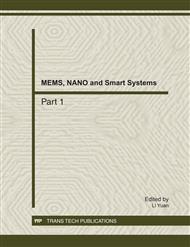p.656
p.663
p.670
p.675
p.680
p.685
p.691
p.697
p.707
Using Taguchi Method to Improve 3D Polishing Process Capability for Optical Fiber
Abstract:
This study used Six Sigma DMAIC five-phase improvement procedures for an empirical research on a multinational optical interconnect manufacturer. The Taguchi method was used for the design of experiment, and the data obtained from the orthogonal table were used to determine the key factors and levels, in order to propose the optimal combination of processing parameters and levels for fiber patch cord 3D polishing. The combination of rough polishing time of 30s, polishing pressure of 0.02pa, polishing pad hardness of 65 degrees, and the fine polishing time of 80s could produce the fittest parameters for a satisfactory level, reduce the defect rate and waste of production cost, and reach the Six Sigma standard. The results proved that the improved process capability model, as constructed by this study, can effectively improve the apex offset quality of fiber patch cords. The findings can serve as references for engineers to improve the quality and production process capability.
Info:
Periodical:
Pages:
680-682
Citation:
Online since:
November 2011
Authors:
Keywords:
Price:
Сopyright:
© 2012 Trans Tech Publications Ltd. All Rights Reserved
Share:
Citation:


